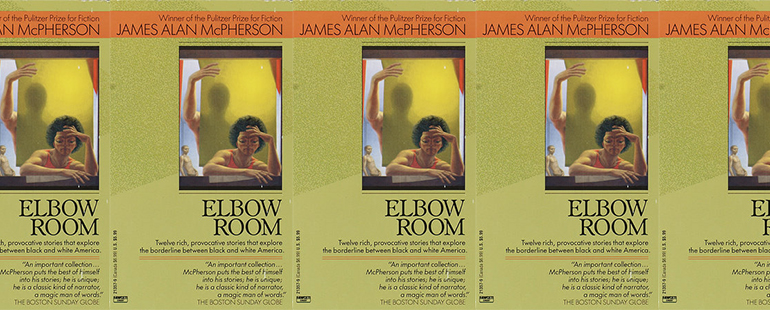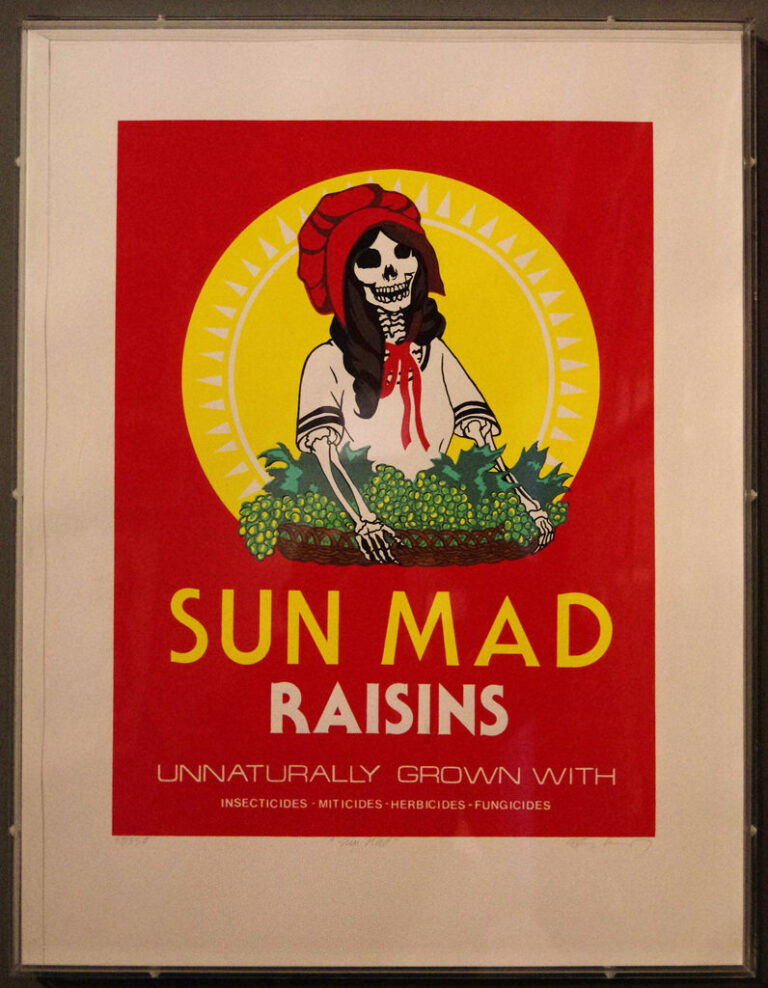James Alan McPherson’s Masterpieces

This year, several headlines came out of the Pulitzer Prizes, perhaps most notably Colson Whitehead’s second award for Fiction. He became only the fourth person to achieve such a distinction, and his history-making turn got me thinking about the first black writer to win the Fiction Prize. If you had to guess who that was, names like James Baldwin, Ralph Ellison, Zora Neale Hurston, and Alice Walker, might come to mind, but the honor actually went to James Alan McPherson for his 1977 short story collection Elbow Room. McPherson has long been one of my favorite authors, but his name seems to have faded somewhat in literary conversation. In light of Whitehead’s win, it feels like the right time to take another look at McPherson’s legacy and to consider how much his nuanced writing on race and race relations has to offer all readers and writers.
I was fourteen when I first encountered a James Alan McPherson short story. Someone had left a copy of the 1989 collection of American Short Story Masterpieces edited by Raymond Carver and Tom Jenks in a free book box at school, and I picked it up because I’ve never been able to resist a free book. At that time, short stories were not my reading of choice, but I was nonetheless curious about what constituted a “masterpiece” of the genre. I searched the contents for an interesting title and one caught my eye; I turned to page 326 and began to read McPherson’s “The Story of a Scar.”
The story begins in the waiting room of a plastic surgeon’s office where two strangers, a man and a woman, are seeking treatment. The doctor is late, the man is bored, and he turns to the woman as a way of occupying his time. He inquires, “‘As a concerned person, and as your brother, I ask you, without meaning to offend, how did you get that scar on the side of your face?” It is a finely calibrated opening question that captures the whole of the remaining short story. The story of the scar is central, but there is a shifting dynamic around whom that story belongs to. Initially, the man claims some rights by insinuating a false kinship between himself and the woman. He knows he might offend, but believes that out of “concern” and as a “brother,” he deserves to know what happened to her. His assumptions rely, however, on a surface-level understanding of the woman’s situation. There may be obvious similarities between them, such as race and physical blemishes, but the man has a temporarily bandaged nose while the woman has a permanently scarred face. There is no comparing them, but the man ignores this fact in favor of his own desire for entertainment. He is seemingly unaware or uncaring that the story of a scar is inevitably a story of pain.
The woman is of course aware of his presumption and blows smoke at him both literally and figuratively before beginning to speak. As she tells her tale, she insists, “‘This here’s my story!’ . . . . ‘You dudes cain’t stand to hear the whole of anything. You want everything broke down in little pieces. . . . That’s how come you got your nose all busted up. There’s some things you have to take your time about.” True to her word, she does not simply relate how she received the scar. Instead, she reaches back in her life to before, when she was working at a post office “makin’ good money, dressin’ bad,” and hanging out with “dudes and girls from the back room, who believed in havin’ a little fun playin’ cards and such durin’ lunch hour” and weekends with “the partyin’ and the dancin’ and the good-timin.’” This is her story, and she is using it to show the man the whole of her life, that she was once young and full of fun and a certain glamour. That life is part of her, just as the scar is. The man does not see this side of her, and as I read her story, I knew that I would have missed it as well. At that age, if I’d seen a scarred woman, I would have made all kinds of incorrect assumptions about her and never imagined the full richness of her experience. McPherson’s writing showed me something new and gave me a chance to consider more deeply the truth and variations of all lives. Through his interactions with her, the man is also made to confront his expectations and judgment, to see her through her story rather than his idea of her story.
As the woman speaks, the man continues to push against her, interrupting her repeatedly and asking her to refocus her attention on the part that he considers important—namely, her scar. The woman parries and proceeds in her telling, but their push-and-pull dynamic comes to a head when the woman relates her romance with a man named Billy Crawford and then introduces a side flirtation with a co-worker nicknamed “Eldorado.” The man, “overwhelmed suddenly by the burden of insight,” bursts out, ‘I know the man of whom you speak . . . Is your mind so dead . . . did the switchblade slice so deep, do you have so little respect for yourself, or at least for the idea of proportion in this sad world, that you’d sit here and praise this brute.” The woman absorbs his accusations and “then continued in an even softer and more controlled voice, ‘Would you believe me if I said that [Eldorado] loved me . . . that he was a better man than Billy?” She persists in questioning his assumptions about how Eldorado came between her relationship with Billy, until the man finally states, “although you are my sister and a woman who has already suffered greatly, I must condemn you and your roughneck friends.” Now sure of how he views her, she readies herself and condemns him in turn.
She tells him, “‘My brother . . . is as far from what you are as I am from being patient . . . Now this is the way it happened . . . I want you to write it on whatever part of your brain that ain’t already covered with page print. I want you to remember it ever time you stare at a scarred-up sister on the street, and choke on it before you can work up spit to condemn her.’” Her words echo his earlier claim of brotherhood, but she rejects on no uncertain terms its familiarity and its implied knowledge of who she is and what has happened to her. She refuses to let him take any control of her story and asserts her own voice so strongly he has no choice but to hear it. After her rebuke, the man is quiet and does not interrupt again as she relates the rest of her story about Billy, Eldorado, and her scar. In the end, he feels that he “had heard it all” except for one final crucial piece of information. He asks her one last question, “‘Sister,’ I said, careful to maintain a casual air. ‘Sister . . . what is your name?’” The query reframes his first with changed tone and content. He now acknowledges her in her own right, as a person rather than just a scar, and is able to see that the story of a scar is also the story of the woman who bears it. This recognition was only made possible through the woman’s use of storytelling to declare her dignity, humanity, and personhood—a declaration I found heroic because she did not back down from external forces telling her otherwise. Her story and his transformation were revelatory to me, and it gave me my initial glimpse of what a short story can accomplish.
Roughly ten years later, a strange convergence of fate led me to an opportunity to take a summer writing workshop with James Alan McPherson himself. They say don’t meet your heroes, but who can resist? As part of getting ready for the class, I finally read the rest of Elbow Room. I’d been reluctant to, worried that the other stories might not live up to “The Story of a Scar,” but I needn’t have been. Each story in the collection had the same depth and craft, the same potential to reveal new and striking facets of life. As a whole, the collection centers on the question and considerations of race, but each story is distinct. I could laugh along to the touching and absurd love story of “Why I Like Country Music” and ponder what happens in “A Loaf of Bread” when “a grocer named Harold Green was caught red-handed selling to one group of people the very same goods he sold at lower prices at similar outlets in better neighborhoods.” I could admire how one story broke ranks entirely to declare, “narrator is unmanageable. Demonstrates a disregard for form bordering on the paranoid. Questioned closely, he declares himself the open enemy of conventional narrative categories.” A wealth of forms, moods, and styles are encapsulated within the collection, and, as with “The Story of a Scar,” I felt I was being allowed a glimpse of a world far different than my own and that I could only understand in part due to McPherson’s careful and compassionate handling of his material.
Elbow Room turned out to be Jim’s final work of fiction. His last published work, A Region Not Home: Reflections on Exile, was published in 2000. Since then, his legacy seems to have been kept alive mostly by anniversary acknowledgments of his books. Ploughshares has also continued to cover his work with a Solo, “Old School” by Allen Gee, published in 2008. In 2020, when I went to find a copy of Elbow Room, neither it nor any of Jim’s work was in stock in local bookstores. I’m not sure why a writer of his caliber seems rarely read these days, but I am sure that his fading is a loss for the literary community. I am inevitably an outsider to the worlds he wrote about and can only understand them as such, but for me his writing cut across race, culture, age, and geography to reach the most ignorant of audiences, and to show me what a real “masterpiece” looked like. Because of him, I was shown beauty in lives I would have overlooked, and I think this is the highest calling of literature. Any author who can do that much deserves to be read by everyone.


